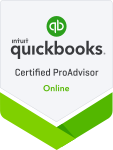4 Tips To Optimize Your Client Intake Process

One of the benefits of working within the legal industry is that there will always be a demand for your services, whether you specialize in intellectual property or family law.
However, it would be naive to believe that this demand alone will bring a consistent stream of clients to your door – after all, new firms open shop every day, which means you are met with competition from the start.
As a result, you must ensure that you give off the best first impression possible. This, coupled with your reputation within the field, is often the difference between a client hiring your team or putting money directly in your competitor’s pocket.
While you will obtain some clients through referrals or recommendations, many form their first impression of your firm during your client intake process. As such, this is one area of your firm that you should be looking to optimize and improve.
Here are some top tips that you can use to do exactly that.
Tip #1: Boost your lead generation.
In a world where we spend more and more time online, lead generation may be your most valuable client acquisition method. Thankfully, there are various ways in which you can generate leads for your firm through your digital presence. For example, you should build a robust website with a user-friendly design, SEO-optimized content, lead magnets, and targeted CTAs (“Calls To Action”).
For example, you could embed virtual chat directly onto your home page or embed attractive offers for free 10-15 minute consultations to pique their interest. This works as a fantastic lead source, convincing potential clients who may otherwise have been hesitant to reach out and try out your offer. If this doesn’t win a signed engagement agreement, “it’s an effective way to capture the contact details of prospective clients, which allows you to build out your email list, develop a relationship with your leads, and ultimately convert more of them into paying clients.”
Your lead generation strategies also paint a broader picture of your firm’s brand, your skilled team, and your expert services, which helps to build the all-important attorney-client relationship. If you can achieve this, potential clients are much more likely to kickstart the hiring and intake process with a positive frame of mind and trust in you to handle their case.
Tip #2: Go Paperless.
Whether it’s a divorce, bankruptcy, or business lawsuit, when a potential client reaches out to your firm, they’re likely going through a stressful period in their lives. As such, their greatest needs are your reassurance and a clear plan of action to resolve their matter. They may shy away when faced with dozens of intake forms, many of which can be complex and confusing. While paperwork is necessary, automating and digitizing this process makes it quicker (and easier) for you, your firm, and your new client.
When you go paperless you’re able to spend more time doing what you’re paid to do and less time on mundane paperwork which can also help you to, grow your business and profits. It’s also the solution to scaling your business for long-term growth and sustainability.
Tip #3: Be consistent.
When curating a client intake process that delivers the best ROI for your firm, consistency is key. There are various reasons for this. For example, one team member may be more personable than others, thus more able to build a strong rapport with anyone they encounter. The immediate forging of strong relationships means that they’ll likely win over more prospective clients than those whose communication skills may not be as strong.
As a result, it may be beneficial to hire a single person (or a separate team) to manage your internal communications. This way, every prospective client will receive a similar introduction to your company or services. Of course, after the onboarding is complete, this person will then be forwarded on to your legal secretary, paralegal, or whomever will be interfacing with them throughout their case.
When searching for the best teammates, consider introducing personality or skill-based testing into your application process. These tests, such as the Myers-Briggs Test, Clifton Strengths Test, and DiSC profiles, “provide objective data that enables better decision-making. Personality assessments provide you with standardized, useful insights regarding how candidates behave in a work context and predict job performance and company fit”. To put it simply, they help to paint a more thorough picture of a candidate than an application alone.
Tip #4: Study your results.
Looking back on previous data and outcomes is one of the easiest ways to assess whether or not a business practice is working. For example, you can look back on engagement metrics on your social media channels to see whether your posts are effective. Therefore, it’s hardly surprising that assessing (or re-assessing) your intake process will help you to improve it.
There are various ways in which you can study your intake process to identify areas of improvement. For example, you could ask for client feedback once the case is finished, to discuss how they found the entire process. Alternatively, you could sit in on calls with your best performing teammates (the kind who onboard the most clients), to see what they do differently to others. For example, they may be a little personable or better at demonstrating active listening skills. You can then apply some of their strategies to your intake policy.
Want to start running your firm like a business? At FinOp Group, our team of experienced CPAs provides full-service law firm accounting solutions, including tax planning, payroll, budgeting, and billing. This means that you can focus on what truly matters, running a stellar law firm. Schedule your free consultation today!







